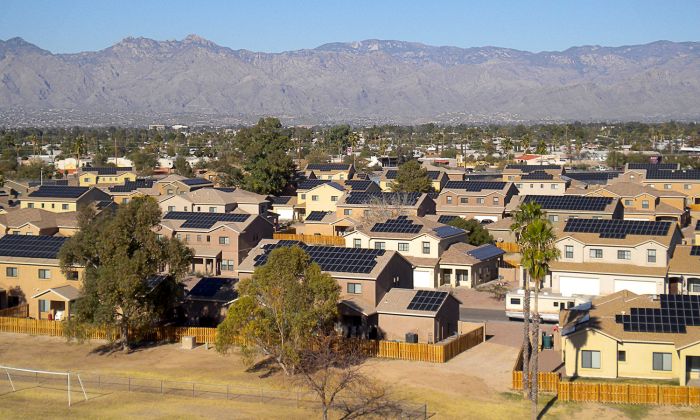SolarCity growing its homebuilder partnerships
 SolarCity’s homebuilder partnership program is growing and poised for more growth.
SolarCity’s homebuilder partnership program is growing and poised for more growth.
The California solar company known for its power purchase agreements and leasing models that enable average homeowners to install solar without the upfront cost, has been aggressively cultivating relationships with homebuilders who are increasingly interested in installing rooftop solar arrays on their standard product.
The homebuilder partner program grew 350 percent between 2011 and 2012, said Walter Cuculic, SolarCity’s director of national builder programs.
That’s some pretty major growth. Cuculic said the growth stems from an inherent value builders have found in the low-cost addition of solar panels.
“Builders are telling us that buyers weren’t giving them credit for some of the energy efficiency upgrades they included until they started adding solar,” Cuculic said. “Some of the improvements they made, like blown-in insulation, weren’t immediately noticeable. But you drive into a solar community and you can tell right away there is something different about it.”
SolarCity started working with Shea Homes a year ago and announced earlier this month that the 517 new SheaXero homeowners in Arizona, California, Nevada, Florida and Washington will collectively save $500,000 on electricity bills a year – $10 million over the 20-year life of their lease agreement. SheaXero homes promise buyers that they’ll never have an electric bill. It’s a marketing strategy that is working for the builder.
SolarCity relishes its builder partnerships, Cuculic said, because it allows homebuyers the most affordable rout to solar power generation there is. Because SolarCity can design systems for a whole neighborhood at once and hire installers to put panels on rooftops in a single neighborhood, there are significant economies of scale that save in the long term, Cuculic said.
The solar company is also working with Toll Brothers on some higher-end semi-custom homes where owners started out with standard 3- to 5-kilowatt solar arrays. Now they’re asking for 7- to 10-kilowatt systems so they can offset all of their energy use.
Cuculic said he cannot make forward looking statements about SolarCity’s future, but continued price decreases for solar panels couple with a rebounding housing industry and an increased interest in electric vehicles mean there is likely to be continued opportunity for SolarCity to partner with homebuilders all over the country.
“There’s even geographically growing interest to areas where you wouldn’t expect it,” he said.



